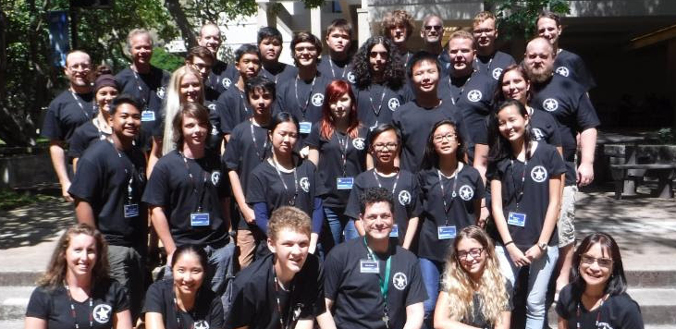

Twenty middle and high school students from Oʻahu, Maui, Molokaʻi and Hawaiʻi Island learned core astronomy and research skills at this year’s HI STAR program. HI STAR, the Hawaiʻi Student Teacher Astronomical Research program, is a week-long summer astronomy program held at the University of Hawaiʻi at Mānoa for students entering grades 8–11. This was the 11th year of the program.
Students gain an in-depth understanding of astronomy throughout the week of intense HI STAR learning. They learn how to measure the brightness of objects in images from research telescopes, the math needed to look for patterns in data and the physics needed to understand what those patterns reveal. Student projects included a search for new planets, studies of the spin and orbits of asteroids and comets, the hidden interior of variable stars, examination of meteorites for clues to the history of the solar system, and using space station data to better understand how the sun bombards the earth with charged particles.
The week culminated in students presenting their work to an audience including professional astronomers. Some students chose to continue their research after the program aiming to attend international events such as the Intel International Science and Engineering Fair and the Pacific Symposium for Science and Sustainability.
Since its inception, at least one HI STAR student per year has been invited to participate in the Intel International Science and Engineering Fair week-long international science fair, and for the past five years, between three and six students have participated. These young student innovators share ideas, showcase their projects and compete for more than $4 million in awards and scholarships.

